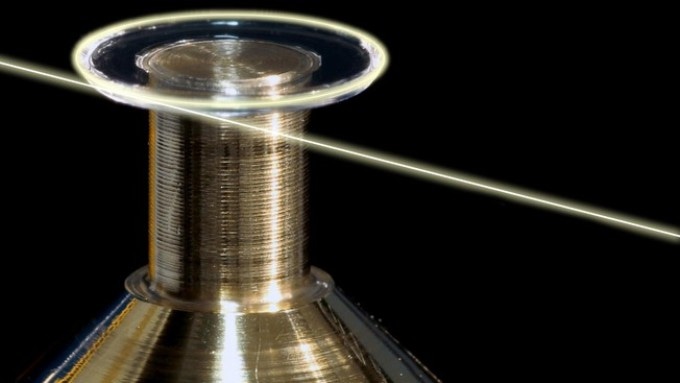Nov 24 2016
 A microresonator crystal used in this study © T.J. Kippenberg/EPFL
A microresonator crystal used in this study © T.J. Kippenberg/EPFL
A team of researchers led by EPFL have constructed ultra-high quality optical cavities for the vague mid-infrared spectral region, opening doors for new biological and chemical sensors, as well as technologies with potential.
The mid-infrared spectral window, called as “molecular fingerprint region,” includes light wavelengths from 2.5 to 20 μm. It is a virtual goldmine for spectroscopy, materials science, biological and chemical sensing, and industry, as it is the range where several organic molecules can be detected.
It also includes two ranges that enable transmission of signals through the atmosphere without deformation or loss. An approach to harness the potential of the mid-infrared spectral window is to apply optical cavities, which are micro-devices that trap light for prolonged durations of time.
However, such devices are currently not explored because of technological challenges at this wavelength. The team led by EPFL has undertaken this challenge and successfully demonstrated that crystalline materials can be used to construct ultra-high quality optical cavities for the mid-infrared spectral region, representing the maximum value realized for any type of mid-infrared resonator until now and setting a new record in the field. This exceptional research is published in Nature Communications.
Caroline Lecaplain and Clément Javerzac-Galy from Tobias J. Kippenberg’s lab at EPFL led the research effort, along with colleagues from the Russian Quantum Center. To build these ultra-high quality microcavities, the researchers used alkaline earth metal fluoride crystals that they polished by hand.
They created uncoated chalcogenide tapered fibers to efficiently couple mid-infrared light from a continuous wave Quantum Cascade Laser (QCL) into their crystalline microcavities. Finally, cavity ring-down spectroscopy methods enabled the researchers to clearly display superior quality resonators deep in the mid-infrared spectral range.
The team also demonstrated that the quality factor of the microcavity is obstructed by multi-phonon absorption. This is an occurrence in which phonons – quasiparticles consisting of energy and vibrations in the cavity’s crystal – concurrently interact and disrupt the trapping of light.
This study is a crucial milestone in the field of mid-infrared materials as it paves the way for access to ultra-high resonators for the first time. It is a major step toward a compact frequency-stabilized laser in the mid-infrared, which could have a crucial impact on applications such as chemical sensing, molecular spectroscopy, and bio-detection.
The research included contributions from the Lomonosov Moscow State University. The study received funding from the European Commission, the Swiss National Science Foundation and DARPA.